Top Web-Based RSS Readers
 Finding the right RSS feed reader must not be a pain in the neck, but not knowing where to start can leave you bewildered. We have compiled a list of five very nice services, and all of them offer something different. There are virtually dozens of more options available to explore online. There are alternatives which allow you to move to more magazine-like experience, Flipboard, where content and sources can be cultivated, recommended and featured for you. Nevertheless, if you would like to stick to the basic RSS state of things, and want a simple scrolling list of freshly updated content from your favorite news sources, blogs, websites delivered to your inbox-like environment, we suggest you check out the following services.
Finding the right RSS feed reader must not be a pain in the neck, but not knowing where to start can leave you bewildered. We have compiled a list of five very nice services, and all of them offer something different. There are virtually dozens of more options available to explore online. There are alternatives which allow you to move to more magazine-like experience, Flipboard, where content and sources can be cultivated, recommended and featured for you. Nevertheless, if you would like to stick to the basic RSS state of things, and want a simple scrolling list of freshly updated content from your favorite news sources, blogs, websites delivered to your inbox-like environment, we suggest you check out the following services.
In the first place, evaluate what is important for you in an RSS feed reader. From my viewpoint, it is simplicity and clean design, so it is important to have tools that will help you organize your feeds. On the other hand, support for OPML file uploads is equally important and a must-have feature for anyone who’s been left out of Google Reader some time ago.
Price: Free
This web based feed reader is a simple and cleanly-cut tool that supports OPML uploads. It is perfectly capable in speed and performance and offers a slew of features that enable users to enter keywords in the settings so that the important stuff appears highlighted any time it shows up in your feed content. This reader is free and available in multiple languages. Moreover, it includes support for Google alerts and preserves the folder organizations of your feeds from Google Reader; one of the most important features is sharing, and the reader is available as an Android application on Google Play, too.
Price: Free
This reader is the number one choice for do-it-yourself people because it is really one of the best RSS readers available, and it’s getting better with every update. It is available as both open source project for developers and a web-based service. The reader is easy to navigate and painless to customize the look and performance with custom CSS. Just like G2Reader, it has some sharing options and you can import feeds manually or automatically. It is one of the smartest RSS readers, a great alternative to those who are still nostalgic about the Google Reader, and positions itself as “bloat free feed reader.” It does not have apps for mobile devices, though.
Price: Free with limited functionality, or Paid
This is a very streamlined and neat RSS feed reader with a great number of social sharing options and third-party services integration. It has the capability of importing and exporting OPML files. This is a freemium online feed reader with as straightforward design, yet organizing tools are not consistent and sometimes slow in response. If you want to delete multiple folders, you will have to delete them manually one by one, which can be a pain. Overall, this is a powerful RSS feed reader with some limited functionality in the free version – for example, you cannot search your news feed according to keywords, which is only available in the paid version.
Price: Free
This web-based RSS feed reader includes smart features that encourage users to explore new content. It offers customization options to adjust lists and folders in the clean and intuitive design. It works fast, and it will ask you to sign in with one of your social network accounts, Twitter, Facebook or Google+. On the flipside, it does not support OPML file uploads and the request to sign up with a social network account is something that doesn’t make me comfortable. Some settings default to public, which isn’t very nice either, but overall this is a very straightforward and powerful RSS reader.
Price: Free
This may be the perfect reader for you because it is truly exceptional in many ways. Not so long ago, the service switched completely to using cloud-based method when saving user data, so it synchronizes between your multiple devices, and you can use your reader and have all the content synchronized across multiple platforms. It has advanced organizing options and an easy to navigate interface; you can discover new sites, tag stories and leverage Facebook and Twitter to display links. It requires Google account to be able to sign-up, and overall is a very neat and powerful, yet simple reader for your news feeds. It also added the support for OPML file uploads, and you can read our tutorial on How to import/export OPML feeds to/from Feedly.
There are a lot more noteworthy RSS readers, which are useful and efficient. You may also want to check out the Old Reader, Subpug, NewsBlur, Good Noows, FeedShow and FeedBooster. News aggregation and consolidation web services that send trending stories to an inbox like interface are now abundant, but some of them are just not good to follow a specific blog feed. Some readers are limited to certain platforms while others allow for sharing and synchronization. Let us know which news feed reader you are using in the comments below – we always welcome your suggestions.

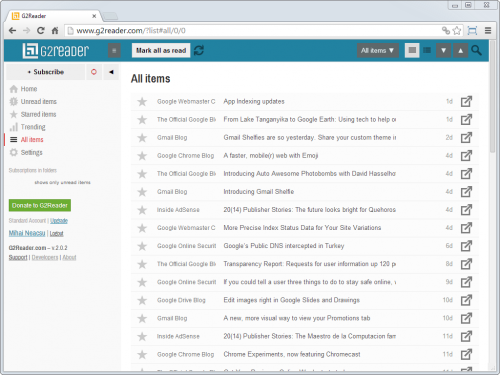
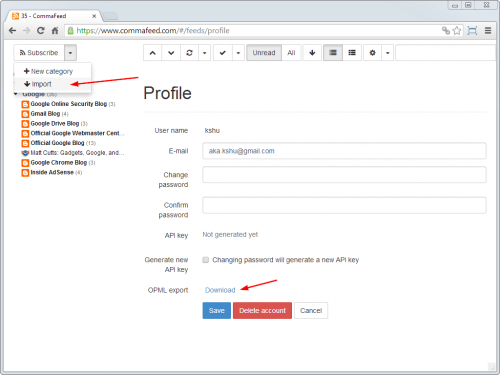
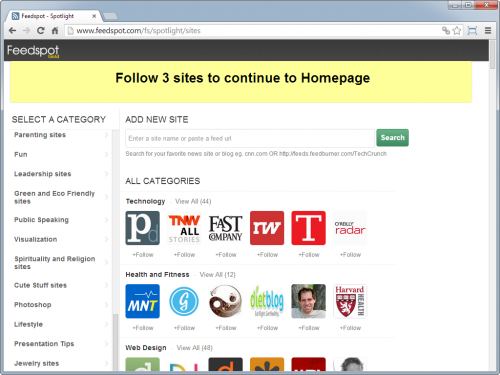
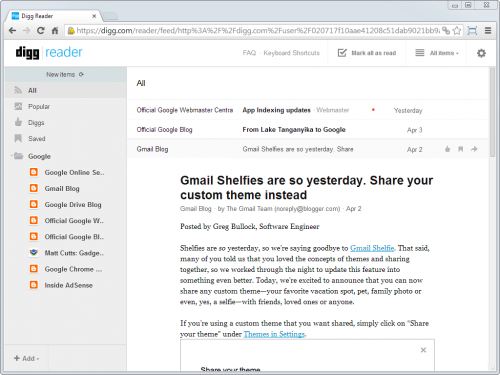
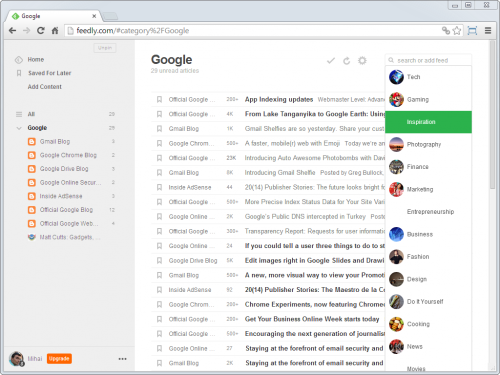
1. Feedspot lost me right after creating an account because it does not have an 'import opml' option
2. All the other 4 seem to have an import/export OPML option, while sometimes out of site, a bit hidden
3. In terms of organizing Folders and Subscriptions, Feedly and Digg Reader are the most easy to use
I wonder how AOL reader stacks up besides these.